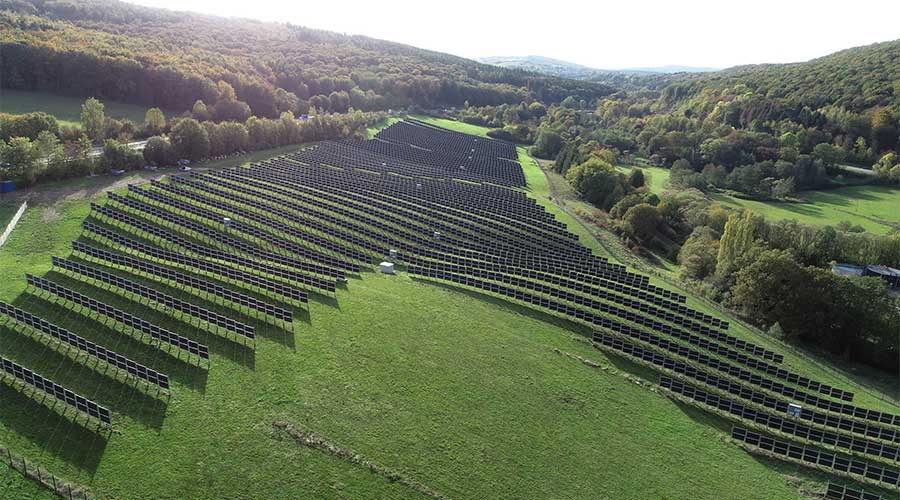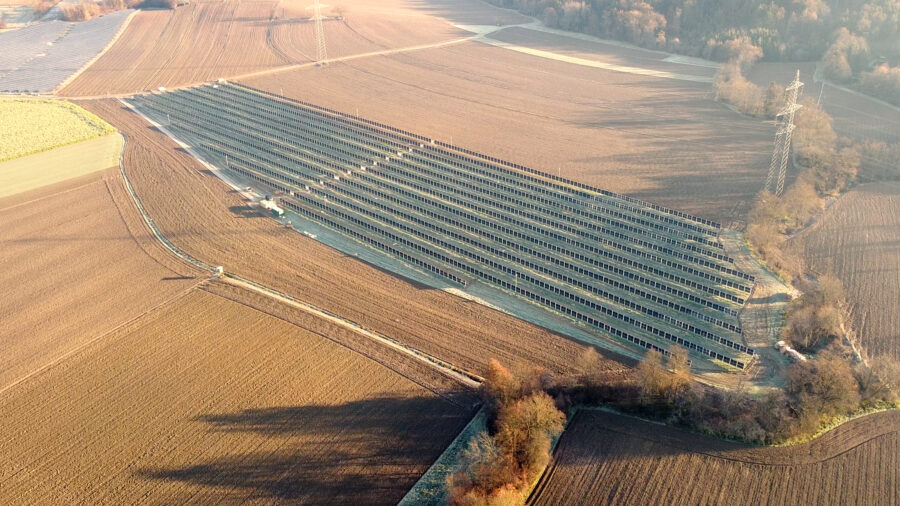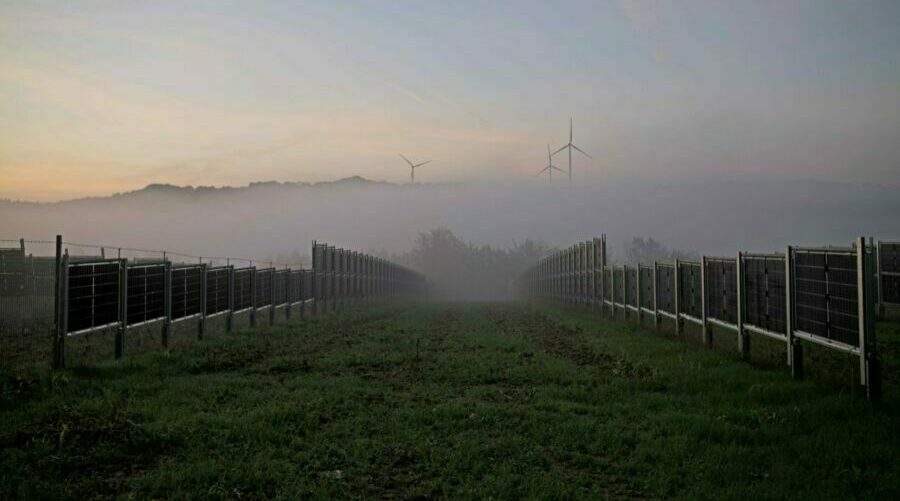Tailored solutions for municipal, regional and local authorities
Vertical Agri-PV from the technology leader
Known from







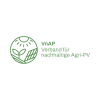

Regulatory framework
for Agri-PV
The urgent need for the energy transition in Europe, driven by climate change, is presenting new challenges in project implementation—not only for operators of renewable energy systems but also for regulators, energy suppliers, and particularly for authorities and local and regional bodies.
These challenges include the often-cited lengthy procedures and approvals for installations, as well as the creation of framework conditions and the interpretation of regulations during implementation and construction.
For an ecologically sustainable energy transition, it is crucial that all stakeholders—including all of us—support these projects in the interest of climate-friendly and sustainable energy generation. This also involves using and shaping the legal framework as flexibly and effectively as possible.
The legal requirements and DIN spec 91434 “Agri-photovoltaic systems – Requirements for the main agricultural use” provide significant leeway for technologies whose agricultural compatibility may be uncertain.
As key local decision-makers, local authorities have the power to promote agricultural-friendly solutions by imposing strict requirements, such as minimal building coverage and specified minimum heights. The technologies for achieving this are already available.
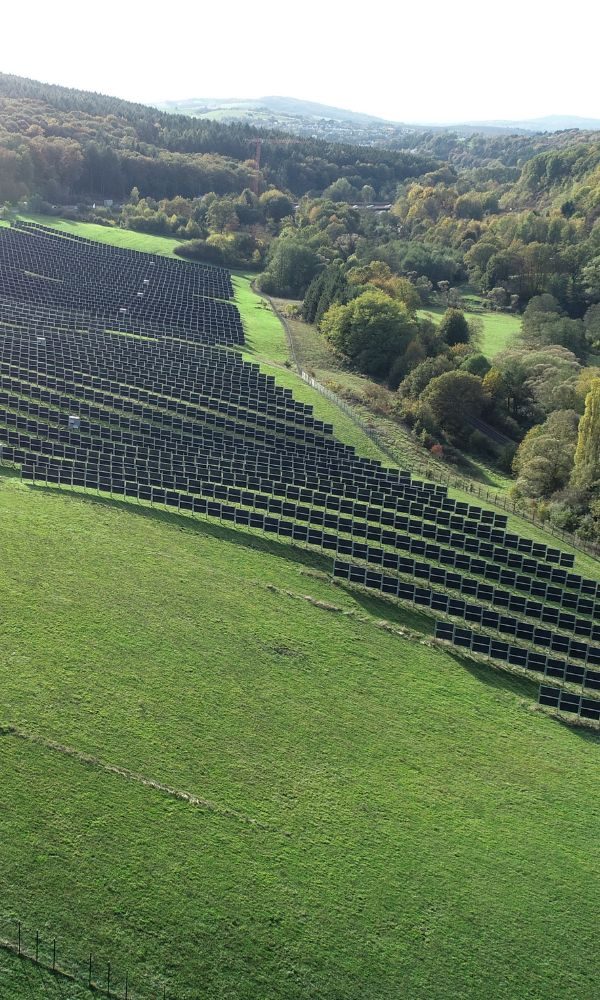


Vienna Energy Michael Horak Ansaat-Schafflerhof
Municipalities as pioneers in achieving climate targets
In the midst of climate change, municipalities are taking the lead in achieving their climate goals through sustainable energy projects.
Regardless of land ownership structure, our in-depth expertise provides comprehensive support for the transparent planning and implementation of Agri-PV projects that meet all legal and local requirements.
Make sure your community looks to a green future!
- Compatibility of agriculture and the energy transition through environmentally sustainable expansion of renewable energy sources.
- Win-win situation for the interests of owners, population and municipalities, property tax revenues, fewer land use conflicts.
- Support for agriculture through income diversification with simultaneous ecological benefits.
- Careful use of soil as a resource (corresponds to federal objectives).
- Agri-PV as part of the transformation of agriculture in times of climate change.
- Signal effect through pioneering lighthouse projects.
Your experts at Agri-PV
The integration of photovoltaics on agricultural land creates ecological and economic benefits, promotes the economic stability of those involved and supports the sustainable development of the region. Fields2Sun by Next2Sun sends a strong signal for an environmentally friendly future and shows how innovative solutions can meet the challenges of climate change.

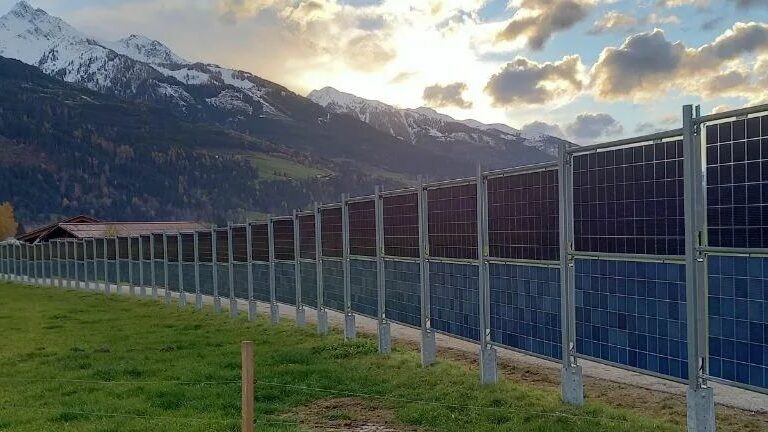

References
Next2Sun has carried out numerous successful Agri-PV projects in various communities, underlining our expertise and leadership in sustainable energy generation.
Our reference projects show a significant improvement in energy efficiency and land use, while always adhering to the highest environmental standards and promoting local biodiversity.

Discover the benefits of Fields2Sun by Next2Sun and create a sustainable future for your community. Contact us now!
Agri-PV for municipalities
We always adhere to the highest ecological standards and promote local biodiversity. Our close cooperation with regional and local partners enables us to develop solutions that are both economically advantageous and environmentally friendly.
If you are a municipality that has grassland or open spaces and are interested in an Agri-PV system, contact us to learn more about possible project implementations or a partnership with Next2Sun and the resulting benefits.


Individual solutions for a greener future
Our flexibly adaptable Agri-PV systems Fields2Sun blend seamlessly into the existing landscape of your community.
They not only preserve the natural character of your surroundings, but enhance it with intelligent, environmentally friendly technology.
Our vertical photovoltaic systems are characterized by their unobtrusive appearance and high energy efficiency.
This customized solution protects biodiversity and promotes economic stability for farmers and local businesses through the use of renewable energy.
By working closely with local partners, we ensure that each project is individually designed to promote environmental sustainability and enhance the landscape.
Next2Sun strives to create direct economic and environmental benefits for your community through innovative Agri-PV projects.
These projects are designed to strengthen the local economy, create jobs and improve the quality of life for all.
Join us in sustainable development that balances energy production and landscape conservation.
Advantages of Agri-PV for municipalities and authorities
Achieving climate targets
Achieve municipal climate targets and create both ecological and economic added value.
Greater acceptance
Compared to other renewable energies, agri-PV projects enjoy a higher level of acceptance.
Transparency
We value partnership-based cooperation and ensure that all stakeholders are involved in a transparent manner.
Revenue diversification
Additional sources of income are generated by marketing electricity or leasing land.
Create jobs
By implementing Agri-PV projects, additional jobs can be created in your community.
Together into the future









Investments and citizen participation in Agri-PV
Community participation not only promotes acceptance of the project, but also enables transparent communication and co-design of the energy future.
Tailor-made investment options allow citizens to benefit directly from the yields of the plants, which means a direct financial feedback into the local economy and an increase in regional economic power.
In addition to local value creation, Next2Sun also promotes education and awareness of renewable energies in society.
Join us in working towards a green future in which economic and ecological interests go hand in hand.
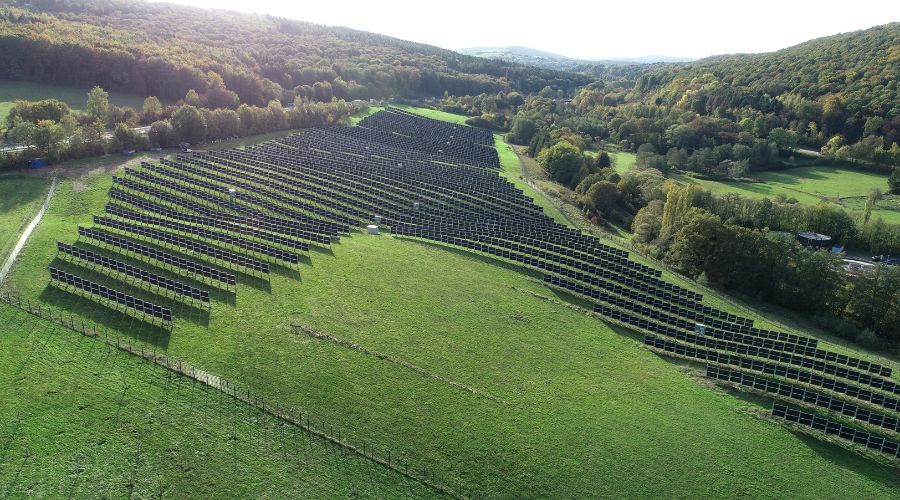
Working with Next2Sun to realize Agri-PV projects not only enables you to invest in sustainable energy, but also strengthens local commitment through active citizen participation.
Agri-PV: An opportunity for local development
Communities are at the center of the energy transition – Fields2Sun offers a future-oriented solution.
This technology supports the local economy by creating sustainable jobs and promoting energy independence for communities without compromising soil quality.
The involvement of the local population plays a central role in the implementation of Agri-PV projects.
This strengthens the local economic system and promotes a sense of community and shared responsibility for a sustainable future.
In addition, these projects create jobs in technology, maintenance and administration, which further stimulates the local economy.
By utilizing local resources while minimizing the carbon footprint, our technology promotes environmentally friendly community development.
In addition, the introduction of Agri-PV supports the preservation of biodiversity and provides a habitat for local flora and fauna, further enhancing environmental sustainability.
With Fields2Sun, you can maximize local benefits and make an active contribution to the global energy transition at the same time.
Ensure that local open spaces are managed twice for sustainable energy generation and agricultural use, while avoiding soil sealing.
Next2Sun works closely with municipal decision makers to develop projects that comply with local regulations and are widely accepted by the community.
Our Agri-PV systems are specifically designed to meet the specific needs and goals of your community.
We ensure that each project is designed transparently and in partnership from planning to implementation to achieve the best results.
Engage with us for a sustainable future that supports and enhances your community.
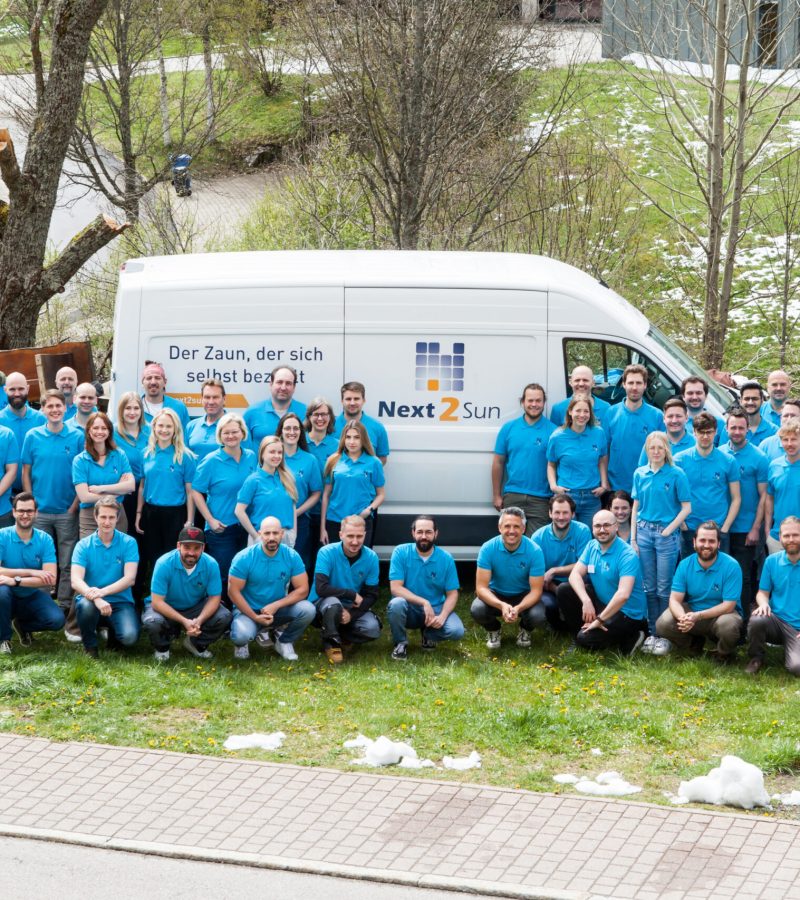
Very friendly and competent!

We say thank you
At Next2Sun, we value the commitment and trust that communities and municipalities place in our Agri-PV solutions.
Every project implemented reflects our shared commitment to promoting both environmental and economic benefits for local communities through sustainable energy generation.
By working together with municipalities and local authorities, we can further develop progressive and effective energy solutions.
Your participation is critical to making agriculture more sustainable and contributing effectively to environmental protection.
We are grateful for your partnership and commitment to working together to promote a sustainable future.
Frequently asked questions
To what extent does Agri-PV promote social acceptance and community involvement?
Agri-PV projects are developed transparently and with the involvement of the community, which leads to a high level of local acceptance and participation.
Next2Sun raises awareness and support for sustainable development projects through education and information programs.
How does Agri-PV support the environmental goals of my community?
Agri-PV makes a significant contribution to reducing the carbon footprint and supports the preservation of biodiversity through the careful use of soil resources.
These systems are designed to support nature and produce renewable energy at the same time.
How can Agri-PV contribute to the energy independence of my community?
Agri-PV enables communities to diversify and stabilize their energy supply by using locally generated solar energy, which reduces dependence on external energy sources and lowers energy costs.
What specific economic benefits does Agri-PV offer to local communities?
By implementing Agri-PV projects, communities can develop new sources of income, including by utilizing unused land and increasing local property tax revenues, while creating jobs in sustainable technologies.
Together for the energy transition!
Achieve your community’s climate targets with Next2Sun Agri-PV systems!

